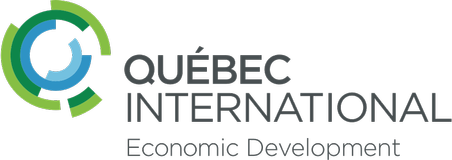Original Article (French only) : La Presse
Frantz Saintellemy, who made an international career in the field of microprocessors, has been President and Chief Operating Officer of this Quebec unicorn for three years. He shares his ambitions to conquer the world with us.
Three years ago, we met while you were involved full-time in the development of Groupe 3737, an innovation hub dedicated to entrepreneurial diversity. What brought you to LeddarTech?
When I sold the microprocessors company ZMDI to IDT in Silicon Valley in 2015, I made a commitment to stay with them for two years to ensure the transition. In 2017, IDT became interested in LeddarTech and its lidar technology (light detection and ranging) and decided to participate in the funding round of over US $100M, which launched LeddarTech.
In September 2017, CEO Charles Boulanger asked me to join LeddarTech since I was a baby of the industry and I had worked in it all my life. I was quite familiar with LeddarTech, a small Quebec company that had lofty ambitions and a lot of potential, and I was familiar with the major players of the automotive industry since they had been my clients for years.
What does LeddarTech do exactly and what differentiates it from other players in the industry who also develop and manufacture automated detection systems?
During the 2010s, it was the autonomous car race. The whole industry was busy working on the advent of the autonomous vehicle, and IDT was developing microprocessors for braking systems, oil, gasoline, and sensors for obstacle detection.
Today, there is more talk about the highly autonomous car, and LeddarTech was the first to develop a technology to miniaturize the lidar motion detectors on a single microprocessor. Our competitors are making the assembly technology on modules that are much more archaic and bulkier.
We are integrating lidar, radar, and camera technologies on microprocessors that capture information and process the signal using algorithms. We ensure optimal miniaturization and increase the efficiency of environmental sensors for the car.
A recent AAA study in the United States showed that 80% of car motion detectors are unreliable, while our technology provides much more accurate raw data fusion and collection.
LeddarTech is based in Québec City but recently made a series of acquisitions. Where are you today?
LeddarTech is a spinoff of the National Optics Institute in Québec City and was founded in 2007. In 2017, the company had a staff of about thirty people and raised US $103M in funding. We concluded three acquisitions, two of which happened in the past six months.
Today we have 215 employees, including a hundred or so in Québec City and around twenty in Montréal and Toronto. We also have 35 employees in Israel and a dozen in Austria. Our team has 170 engineers in total.
The acquisitions we made have allowed us to seek out the specific expertise that would have taken longer to develop ourselves. We are currently preparing new funding and plan to make other acquisitions to continue our expansion.
Who exactly are your shareholders? I understand that the American technology company IDT invested in the company in 2017.
We have several shareholders. At the beginning, in 2007–2008, we had financial partners such as BDC, Desjardins, and, in 2017, we had several strategic partners who added US $100M in funding.
IDT was acquired by the Japanese firm Renesas, which is an equipment manufacturer with a 30% share of the world market for microprocessors installed in motor vehicles. There is also the German equipment manufacturer Osram, the American Delphi (now Aptiv, following its split from Delphi), and Marelli.
All these equipment manufacturers want to use our systems and environmental detection solutions with their clients, the world’s major automotive manufacturers.
The demand for our microprocessors is expected to explode from 2023 onwards, while the production of highly autonomous cars will lead to the installation of many more sensors and assistance functions for traffic driving or assisted steering on freeways.
Our solutions are at the heart of the next stage of the autonomous car, and we will be able to install between $100 and $300 worth of our products in several million vehicles.
How will Quebec benefit from your active participation in this next stage of the emergence of highly autonomous vehicles?
Quebec has no history in the automotive industry. We don’t have companies that can give us a frame of reference, as Bombardier could do in the aviation industry. This is why we’ve adopted the strategy of partnering with leading equipment manufacturers who can help us break into this huge market.
It’s fitting that our recognition has come at a time when Quebec wants to establish itself as an important player in the electric car battery sector, at all stages of its production.
The valuation firm Tracxn included you in its shortlist of Canada’s 10 most promising startups and describes you as one of the next five unicorns, meaning you are valued at one billion dollars. Does that intimidate you?
Not at all. Our competitors who also use lidar technology but still manufacture very bulky and less efficient modules, have just been given even higher valuations.
That’s the case for Velodyne and Aeva, who are both on the NASDAQ and are valued at US $2.5B and US $2.1B respectively, and Luminar, which has been valued at US $3.5B.
We aren’t planning to use the public market. We are in the process of completing a new round of financing, and we have the means to continue our expansion and, above all, we continue to secure client projects.




